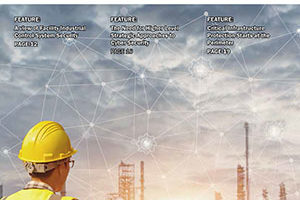In response to ongoing cybersecurity events, the National Security Agency (NSA) released a Cybersecurity Advisory Thursday “Detecting Abuse of Authentication Mechanisms.” This advisory provides guidance to National Security System (NSS), Department of Defense (DoD), and Defense Industrial Base (DIB) network administrators to detect and mitigate against malicious cyber actors who are manipulating trust in federated authentication environments to access protected data in the cloud. It builds on the guidance shared in the cybersecurity advisory regarding VMware with state-sponsored actors exploiting CVE 2020-4006 and forging credentials to access protected files, though other nation states and cyber criminals may use this tactic, technique, and procedure (TTP) as well.
This advisory specifically discusses detection and mitigation of two TTPs to forge authentications and gain access to a victim’s cloud resources. While these TTPs require the actors to already have privileged access in an on-premises environment, they are still dangerous as they can be combined with other vulnerabilities to gain initial access, then undermine trust, security, and authentication. Initial access can be established through a number of means, including known and unknown vulnerabilities. The recent SolarWinds Orion ® code compromise is one serious example of how on-premises systems can be compromised, leading to abuse of federated authentication and malicious cloud access.
Mitigation actions include hardening and monitoring systems that run local identity and federation services, locking down tenant single sign-on (SSO) configuration in the cloud, and monitoring for indicators of compromise. NSA remains committed to providing provide timely, actionable and relevant guidance, and is partnering across the public and private sectors in ongoing incident response efforts. Releasing this advisory with further technical guidance allows NSA’s customers to apply preventative measures to the fullest extent along with the detection and mitigation actions.
Summary
Malicious cyber actors are abusing trust in federated authentication environments to access protected data. An “on premises” federated identity provider or single sign-on (SSO) system lets an organization use the authentication systems they already own (e.g. tokens, authentication apps, one-time passwords, etc.) to grant access to resources, including resources in “off premises” cloud services. These systems often use cryptographically signed automated messages called “assertions” shared via Security Assertion Markup Language (SAML) to show that users have been authenticated. When an actor can subvert authentication mechanisms, they can gain illicit access to a wide range of an organizations assets.
In some cases, actors have stolen keys from the SSO system that allow them to sign assertions and impersonate any legitimate user who could be authenticated by the system. On 7 December, NSA reported on an example where a zeroday vulnerability was being used to compromise VMware Access®1 and VMware Identity Manager®2 servers, allowing actors to forge authentication assertions and thus gain access to the victim’s protected data. In other cases, actors have gained enough privileges to create their own keys and identities such as “service principals” (cloud applications that act on behalf of a user) or even their own fake SSO system. According to public reporting, in some cases, the SolarWinds Orion code compromise provided actors initial access to an on-premises network which led to access within the cloud.
Note that these techniques alone do not constitute vulnerabilities in the design principles of federated identity management, the SAML protocol, or on-premises and cloud identity services. The security of identity federation in any cloud environment directly depends on trust in the on-premises components that perform authentication, assign privileges, and sign SAML tokens. If any of these components is compromised, then the trust in the federated identity system can be abused for unauthorized access.
To defend against these techniques, organizations should pay careful attention to locking down SSO configuration and service principal usage, as well as hardening the systems that run on-premises identity and federation services.
Monitoring the use of SSO tokens and the use of service principals in the cloud can help detect the compromise of identity services. While these techniques apply to all cloud environments that support on-premises federated authentication, the following specific mitigations are focused on Microsoft Azure federation. Many of the techniques can be generalized to other environments as well.




